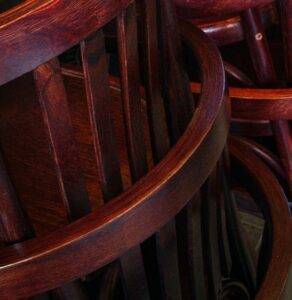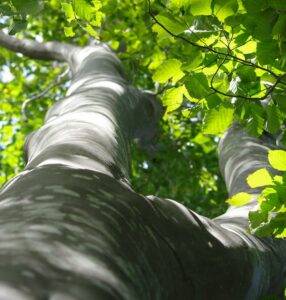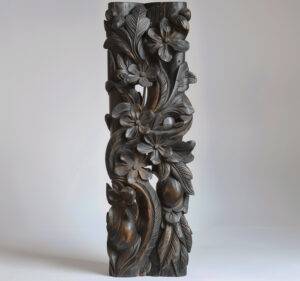The importance of wood moisture for the sauna
The moisture content of the wood is another important factor when choosing the right material for the sauna cabin. Wood that is too damp can lead to mold growth and have a negative impact on the indoor climate. It is therefore important that the wood used has an optimum moisture balance.
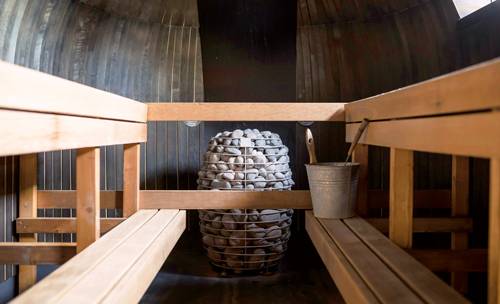
Hardwood vs. softwood: which is better for the sauna?
Hardwood is often recommended as the preferred material for building saunas as it is more resistant to moisture and heat than softwood species such as spruce or pine. Hardwood floors are less prone to warping or cracking and therefore offer a longer lifespan.
However, well-treated softwoods such as spruce are cheaper to buy and have a pleasant feel, making them a popular alternative, especially when the budget is limited.
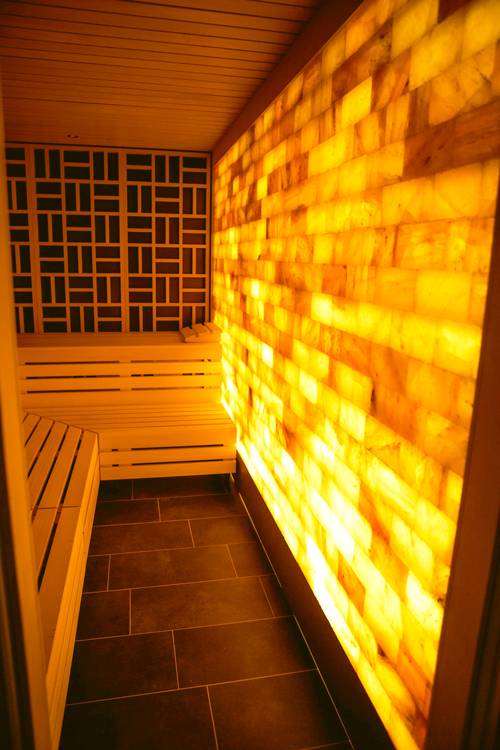
The advantages and disadvantages of aspen as sauna wood
Aspen is a popular type of wood for saunas. It has low thermal conductivity, which means that it is pleasant to the touch and does not get too hot. However, aspen is susceptible to cracking and warping, especially if it is not regularly maintained.
Spruce as an inexpensive alternative for the sauna
Spruce is an inexpensive and widely used type of wood for saunas. It has a high thermal conductivity, which means that it can be heated up quickly. However, spruce wood tends to warp and crack if it is not properly cared for.
Why hemlock is becoming increasingly popular as sauna wood
Hemlock wood is becoming increasingly popular as a material for sauna cabins. It is resistant to moisture and heat and therefore offers a long service life for the sauna. Hemlock wood also has a pleasant feel and a subtle fragrance.
However, hemlock wood is generally more expensive than other types of wood, which should be taken into account when making a decision.
The special properties of cedar as sauna wood
Cedar is considered one of the highest quality woods for building saunas due to its natural resistance to moisture and mold growth. Cedar cabins also have a pleasant fragrance and offer an aesthetically pleasing appearance.
However, cedar is also one of the most expensive types of wood, making it a luxury option.
How to choose the right type of wood for your sauna
The choice of wood type depends on personal preference and, of course, budget. It is important to consider the properties of the wood, such as resistance to moisture and heat, feel and fragrance. The sauna wood should also be maintained regularly to extend its service life.

The care and maintenance of sauna wood
Sauna wood should be cleaned and oiled regularly to protect it from moisture damage. If necessary, repairs can also be made to cracks or deformations to extend the life of the sauna wood.
Conclusion: The choice of wood type for the sauna has a major influence on the sauna experience
Choosing the right type of wood for the sauna can influence the indoor climate and improve the comfort and durability of the cabin. Everyone should select a suitable type of wood based on personal preference and budget and maintain the sauna wood regularly to ensure optimal service life.
It is critical to take your time when picking the type of wood, as it has a major impact on the sauna experience. Everyone should therefore select a suitable type of wood based on personal preferences, as in addition to the durability properties, the look, feel and sense of smell will of course also play a part in determining how positive a sauna session will feel.

